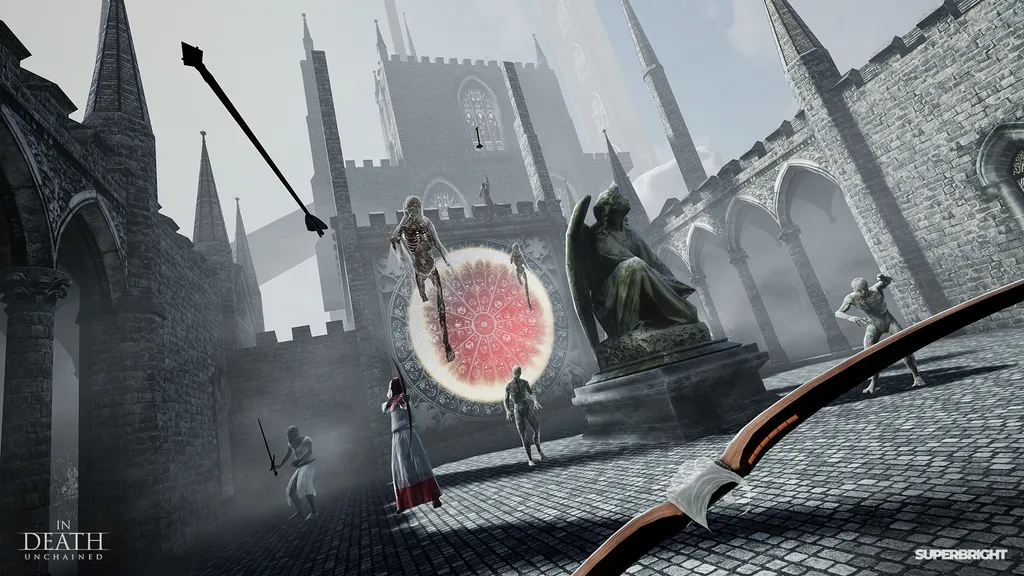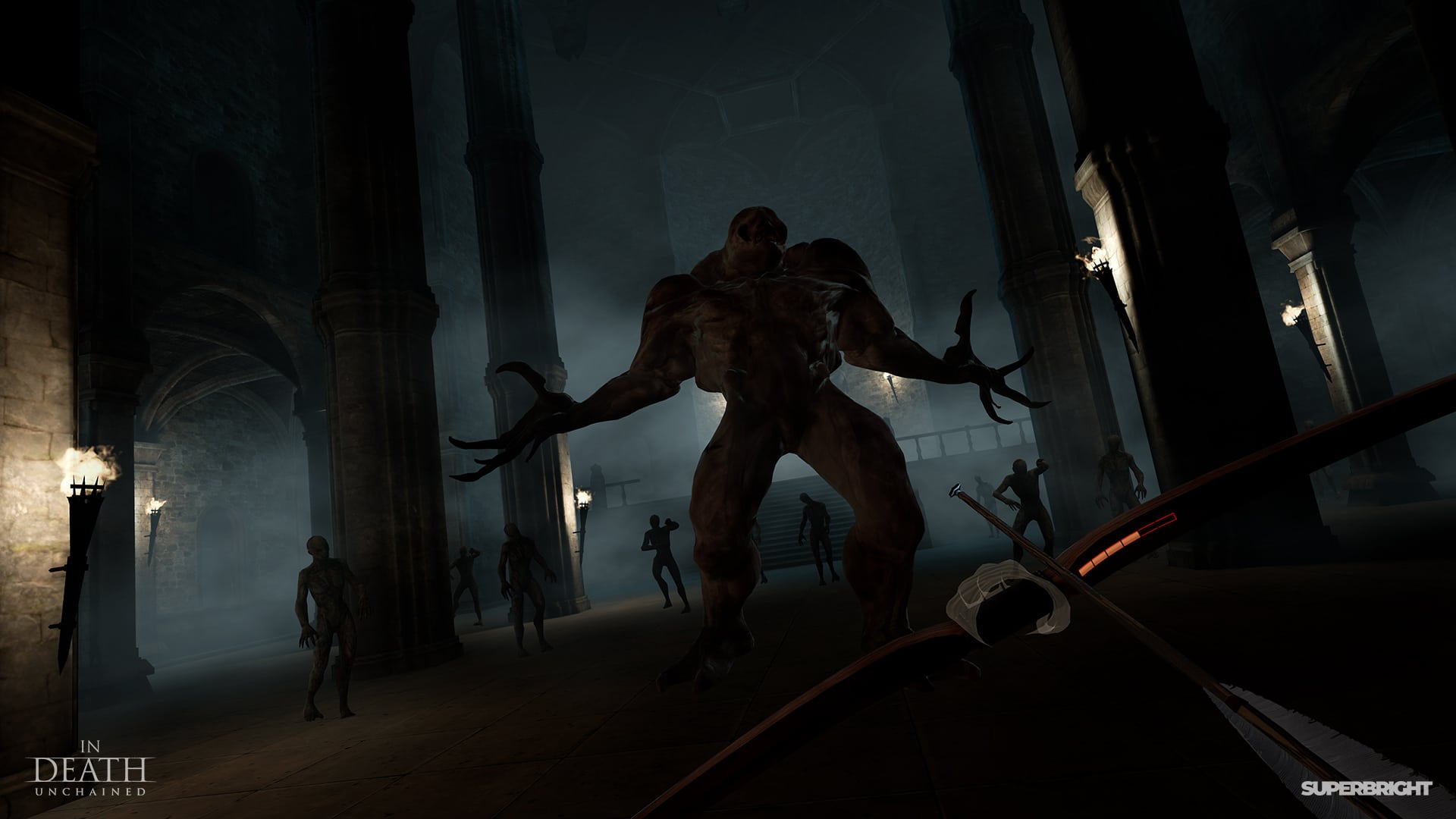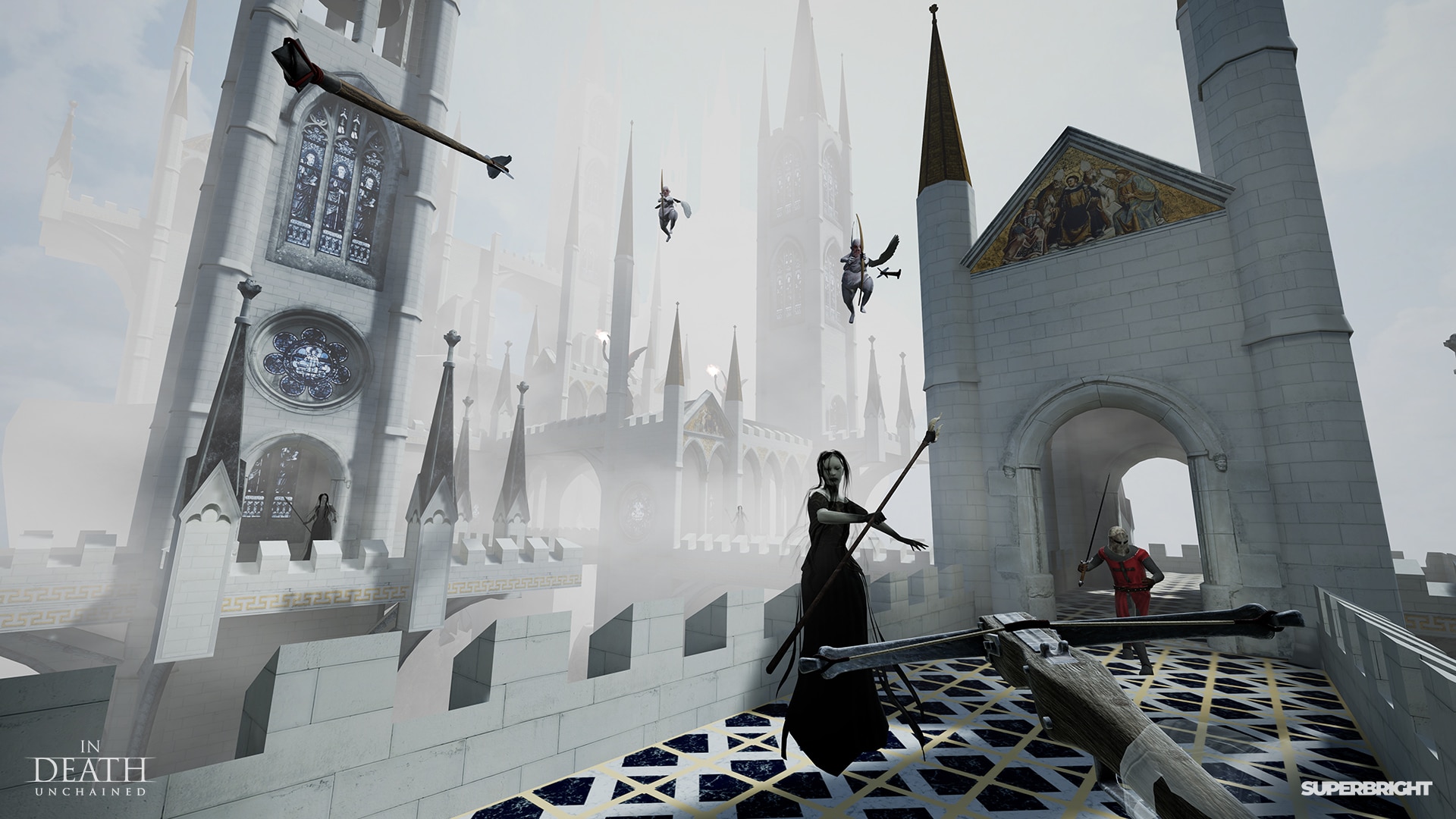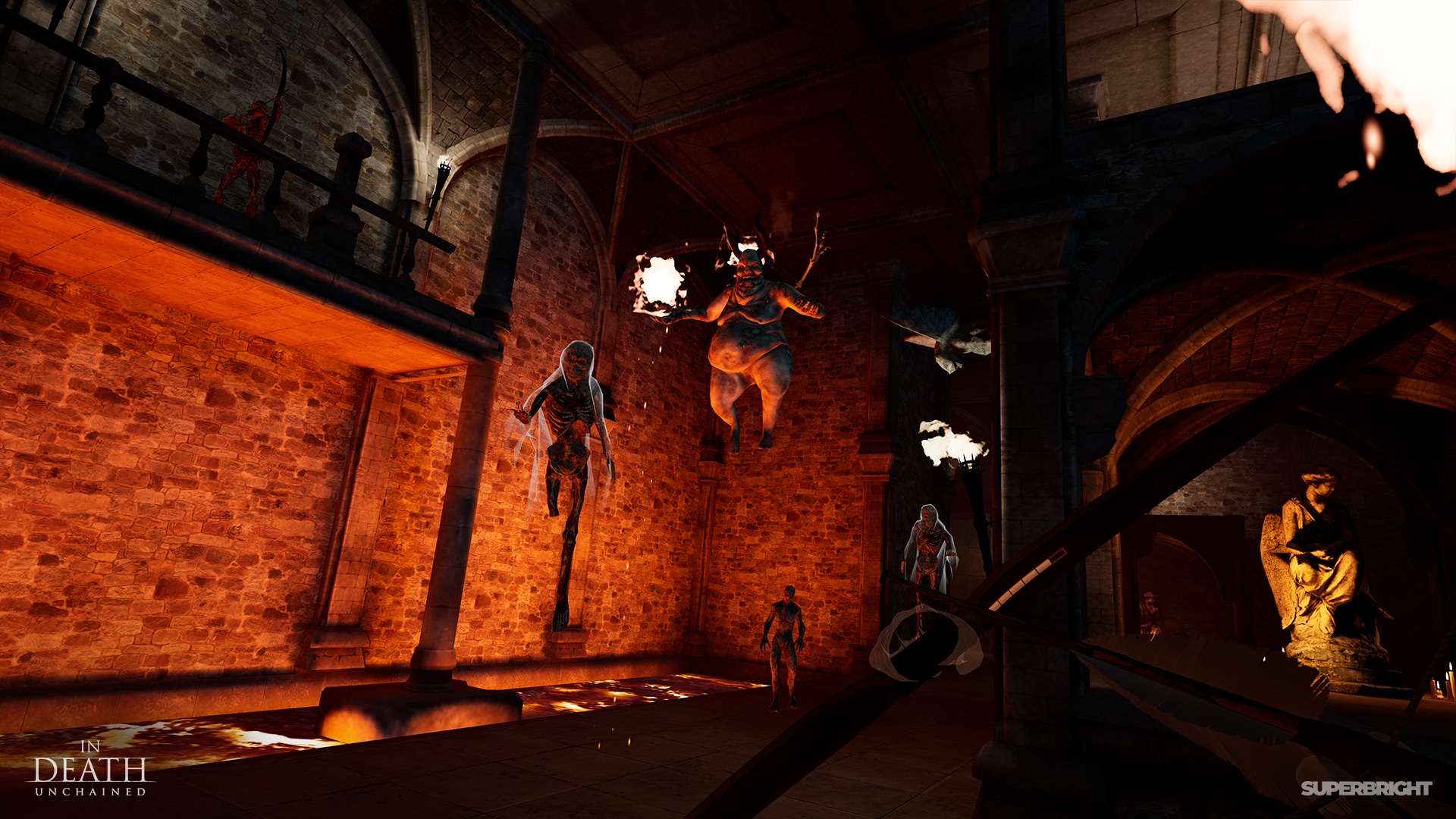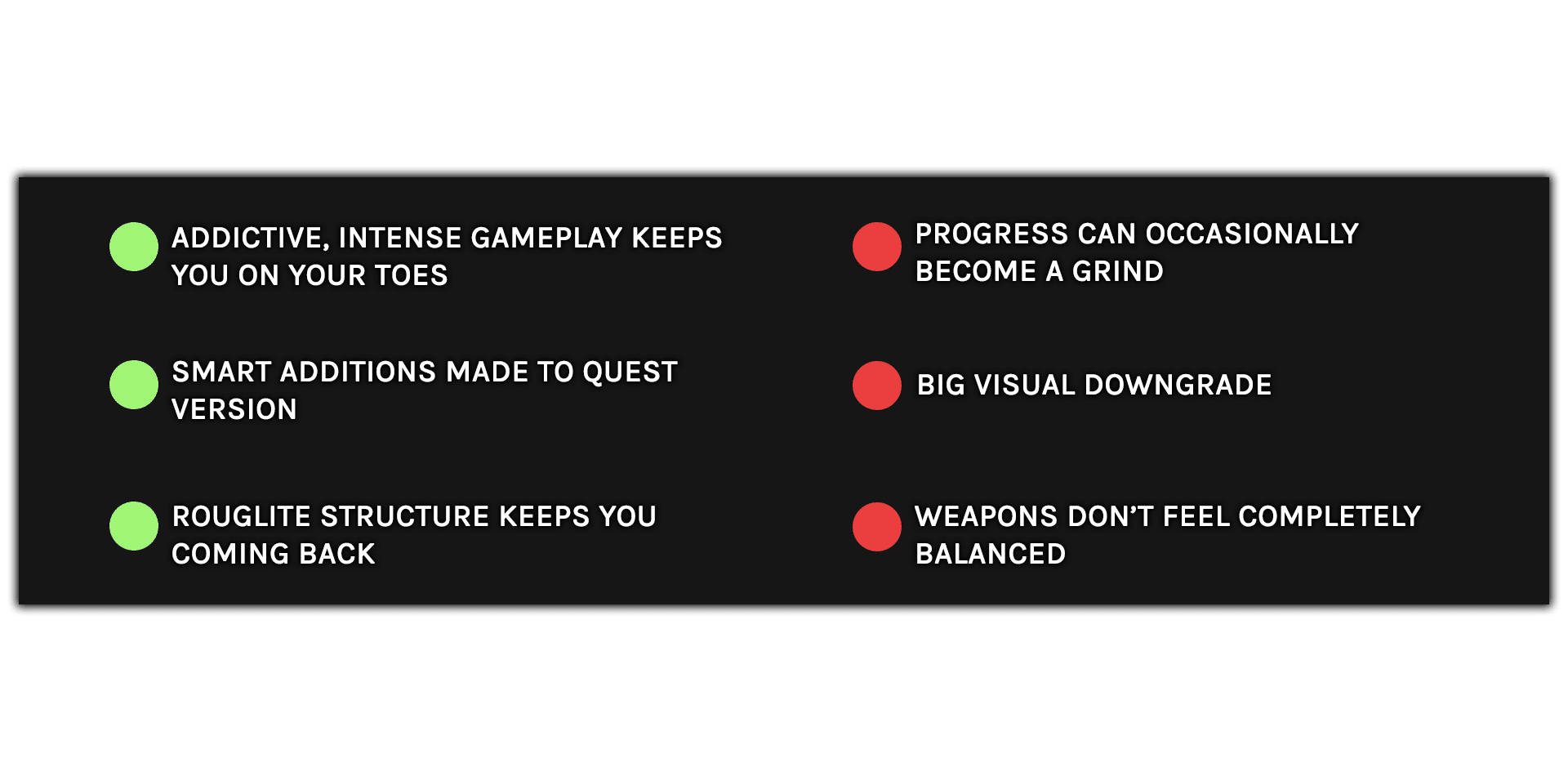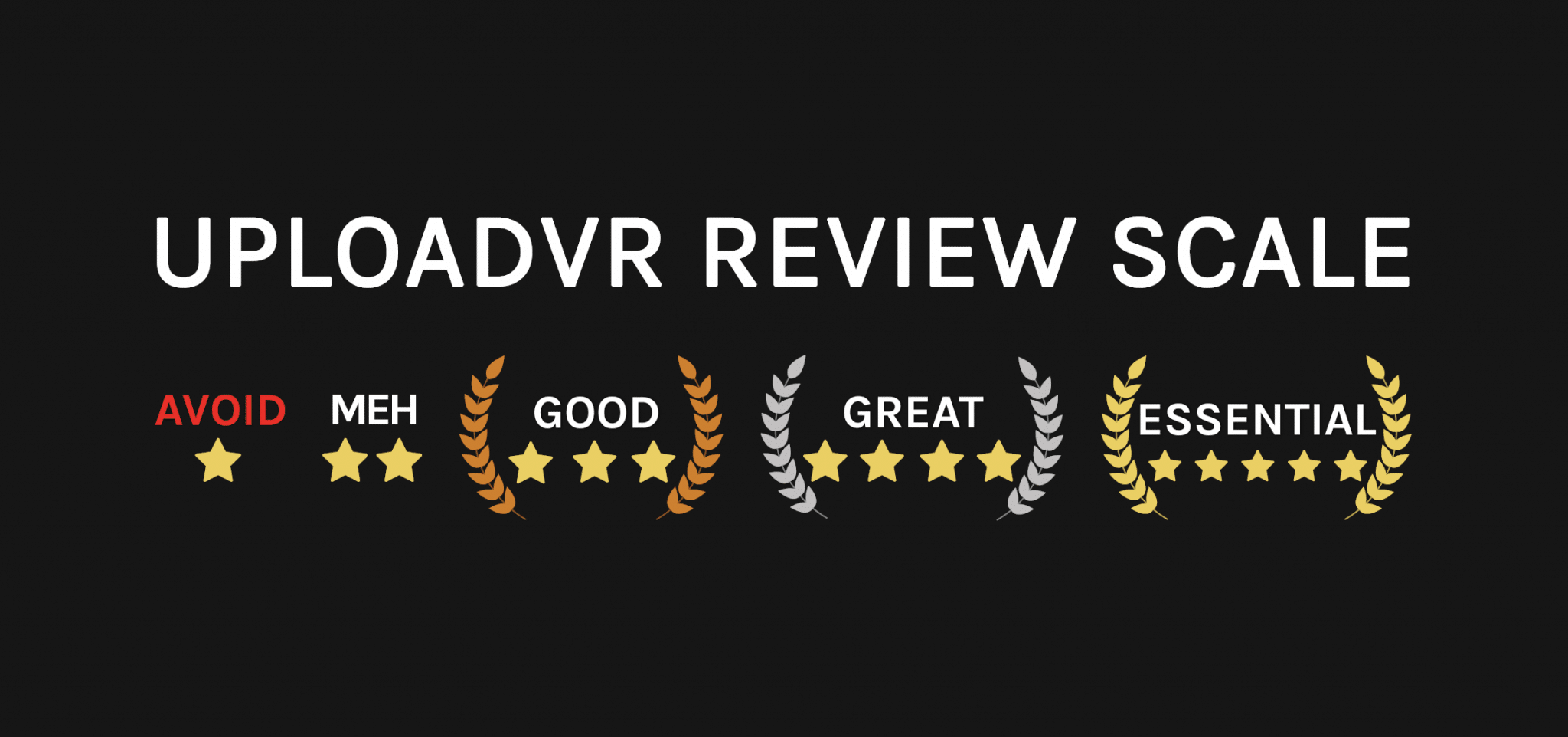In Death released for PC VR and PSVR in 2018, but today it releases for Oculus Quest with some new content and a revamped title — In Death: Unchained. Does this version live up to the PC VR original? And what’s the new content like? Read on for our full review of In Death: Unchained on Oculus Quest.
Earlier this week, I completed a fairly good In Death run. Happy with my progress, I realized as I respawned that I was absolutely starving. It was lunchtime and I needed to eat, but a voice inside me whispered “just one more run, then lunch.” I gave into the voice, and that’s when I knew I was properly addicted to In Death.
It’s not without its faults, but In Death: Unchained feels like one of the best gaming experiences available on the Oculus Quest. The only big disclaimer is that it’s a roguelike, which is a genre that many enjoy but can also be quite polarizing. That being said, the ‘pick up and play’ feel that comes with the genre does lend itself very well to the ‘take anywhere, play anywhere’ ethos of the Quest. If you’ve got 20 minutes to jump into VR, you might soon find yourself swapping out Beat Saber for a quick dive into Unchained instead.
But just to be clear — this is a very different type of Quest game. It’s not a VR experience you’ll be demoing to your family to show off the device. Instead, it’s one you’ll want to come back to in private whenever you’ve got a bit of spare VR time for yourself.
Unchained and Upgraded
In Death: Unchained is a reworked Oculus Quest version of the original game. It’s set in the afterlife, except heaven is not quite as peachy as you would expect — it’s been overrun by zombies, templars, headless monks and many other creepy enemies. There’s lots of religious imagery and themes, and it works well as an aesthetic backdrop to an otherwise unimportant and minimal story.
Most of the game’s core content remains the same, except paired down visually to run on Quest and with the addition of a whole new world, The Abyss, alongside Sanctuary and Paradise Lost from the original release. While the original game was developed by Solfar Studios, this new Quest version was taken over by a different studio, Superbright. You can read more about this in our recent interview with Wojtek Podgorski, Superbright CEO. It’s safe to say that the Quest version will be the studio’s focus from here on, leaving the PC VR and PSVR versions behind — Quest will receive new content and DLC, but other platforms will not.
Read More: Taking Over In Death: Superbright On Quest Challenges And The Future
The game is a VR shooter that concerns itself solely with archery combat. Unlike other roguelike games, you don’t unlock an array of different weapons or armor as you progress — there’s only two weapons to choose from throughout the entire game. However, as you attempt a run, die and try again, the game will get significantly harder and constantly keep you on your toes, spawning more enemies, tougher foes, and entirely new ones as well.
There’s not a melee weapon insight — you start off with just a bow and arrow, and soon unlock a crossbow as an alternative. While they have their pros and cons, it’s still all essentially arrow-based combat. There’s also arrow variants to unlock and pick up during the game, such as fire, ice or exploding arrows with different effects on certain enemies. You’ve also got a shield you can use to block attacks, plus a small dagger you can throw to quickly dodge enemies (but don’t get excited, it doesn’t deal any damage)
There are three worlds to progress through — Sanctuary, Paradise Lost, and the Quest-exclusive world The Abyss — each with their own aesthetic, theme and procedurally generated layouts. Each run will never quite be the same, as the layout and enemy placement is randomized. As you progress, you’ll unlock achievements that grant you progress percentage, which then unlocks new arrow types and harder enemies.
At first, you’ll be restricted to just the first world, Sanctuary — after you achieve 20% progress through achievements and you clear the entire first world, culminating in a boss fight, you’ll unlock Paradise Lost. Likewise, after clearing that world and reaching 40% progress, you’ll unlock The Abyss, the Quest-exclusive world. It’s an appropriate addition to the content of the original game, providing the same enthralling gameplay with a much welcomed new visual theme. Superbright have done well to match the existing game’s heritage while putting their own stamp on the new content.
Living Up To The Title
In Death is an excruciatingly hard game. You’ll quickly realize that dying is part of the game. To give you an example of the difficultly, we played The Abyss in a special preview build of the game, separate from the review build, that skipped straight to that world. With the full review copy, we weren’t able to progress quick enough to reach The Abyss, even after days of playing. That game isn’t designed in a way that lets you zip through everything. The first few achievements are fairly easy to unlock, and grant you a bit of progress quickly. However, you’ll reach a point where some achievements become more difficult and some simply just take time grinding through runs to unlock.
That being said, this is definitely not a negative — the core gameplay loop is incredibly addictive. Combined with the slow burn of the game’s progression, you always have something to work towards and the game still feels fresh after many runs. Even when you unlock and clear all 3 worlds, you’ll start over again with access to harder version of each one. It’s empowering, exciting and refreshing to see such a lengthy, in-depth and challenging experience on the Quest. The game constantly has you on the edge and never lets you rest.
There’s also smart break points placed in each level, new to the Quest version, where you can quit the game and return later on. These are incredibly helpful, as In Death can be an exhausting game to play, especially in long sessions. There’s never a dull moment, which means you’ll be lifting your arm up for 20 minutes or more at a time, leading to some soreness and fatigue. That being said, playing the game for review definitely doesn’t help in this regard — players at home will likely only play in short bursts, making this much less of a problem.
There’s a robust scoring system that grants you bonuses and more points for things headshots or killing certain types of enemies. With leaderboard integration, you’ll be able to compete for a global high score or just to beat your the score of your Oculus friends.
[vc_row][vc_column][vc_cta h2=””]In Death: Unchained Review – Comfort
As it stands, In Death: Unchained only offers teleport locomotion, though a smooth option is coming soon too. Movement in the game is entirely comfortable with this option, but keep in mind that In Death is a very active experience and you may well feel fatigued after a short play session.[/vc_cta][/vc_column][/vc_row][vc_row][vc_column][vc_column_text]
Nocking it out of the Park
In terms of combat, archery mechanics are some of the best we’ve tried in any VR game. This was a sticking point for David in his review of the PC VR original, and the same applies here — the bow is incredibly satisfying to shoot. Long range headshots feel amazing to pull off, as does unleashing a quick flurry of arrows to kill a bunch of enemies at short range. It’s just incredibly good and unmatched by any other VR archery system I’ve tried.
The other weapon, unlocked midway through the game, is the crossbow. Its inclusion is an interesting choice, as the method of fire can make it feel more like a machine gun at times. Not only does it deal significantly more damage across the board, but it’s much easier to shoot several arrows in quick succession at close range. It’s easy to see the intended system here — if you prefer mid to long-range, opt for the traditional bow. Likewise, for short and mid-range action, go for the crossbow instead.
However, in practice, it doesn’t feel quite as balanced as that. The reliability of the crossbow at short range means you can teleport right up in a enemy’s face and kill them with a single headshot before they even have time to react. Of course, this isn’t possible in large groups of enemies, but it still feels like it takes away from some of the strategy and the patience that the bow requires. It’s fantastic to zip around the map one-shotting enemies with the crossbow for a little while, but I found myself returning to the bow when I wanted to play seriously.
The movement system for In Death is integrated beautifully into the game’s core mechanics. At launch, the only movement options is teleport. However, it’s not your traditional button-press teleport system — you can load a special teleport arrow using the A or B buttons, which you can shoot from your bow to be teleported to wherever it lands. It’s a fantastic, intuitive and easy to use system that easily beats out traditional teleport mechanics.
The developers recently indicated that smooth locomotion options will be added in a post-launch update, but even if you’re a teleport skeptic, we would encourage you to give this system a try anyway.
The Drawbacks
You might be wondering how such a detailed, large and intense game can run on the Quest. Isn’t there always a big payoff in cases like this? Well, the answer is yes, and that payoff is exactly where you would expect it — the graphics.
Set in the afterlife, the original game on PC VR has a heavenly sheen to it. There’s some beautiful lighting effects from the sky, gorgeous warm oil lamps inside and nice reflections off shiny surfaces, like the Templars’ helmets. While the general visual style has been preserved in Unchained, there’s no denying it’s a significant downgrade. Textures look much lower resolution and most of those beautiful, heavenly lighting effects are dialed down or missing completely. It’s the same game, but missing a lot of the visual panache from the original. Given the significant limitations of the Quest, this is all understandable from a development perspective, but it’s still a bit disappointing.
The enemy animations can also be predictable and repetitive, which is a gripe that feels amplified by the other visual downgrades on the system. There’s also some weird bugs and inconsistencies with hitboxes and enemy arrows as well — while they can feel unfair, they’re all easily adjusted to.
In Death: Unchained on Oculus Quest — Final Verdict
It’s clear that some big visual sacrifices had to be made to get In Death running on the Oculus Quest. While the game does lose some of its unique visual identity in the translation, the gameplay more than makes up for it. More often than not, you’ll be having such a fun time grinding through runs that the visual fidelity becomes unimportant. I was too wrapped up in chaining headshots, avoiding enemies and maximizing my high score to care about what the game looked like. You can easily lose yourself in the intense combat.
It’s refreshing to see a game arrive on Quest that offers such depth and difficulty. Unlike many other one-and-done games or short campaigns available on the system, Unchained offers a style of game that will players occupied for multiple sessions, potentially months, to come. If you’re a fan of roguelikes, you won’t be disappointed. If you’re new to the roguelike genre, we’d encourage you to give In Death a try — it may be a difficult game, but the concepts are simple to understand. You’ll be mastering and improving your bow and arrow combat for hours, constantly readjusting as the game increases in difficulty to match your progress.
In Death: Unchained is a unique, unparalleled game on the Quest system at the moment. It’s more than a game you’ll play once on the weekend and never pick up again. If you’re looking for something to commit and return to over several sessions, then Unchained seems like a great bet for Quest owners.
In Death: Unchained is available now on Oculus Quest for $29.99.
For more on how we arrived at this score, read our review guidelines. Agree or disagree with our In Death: Unchained review? Let us know in the comments below!

